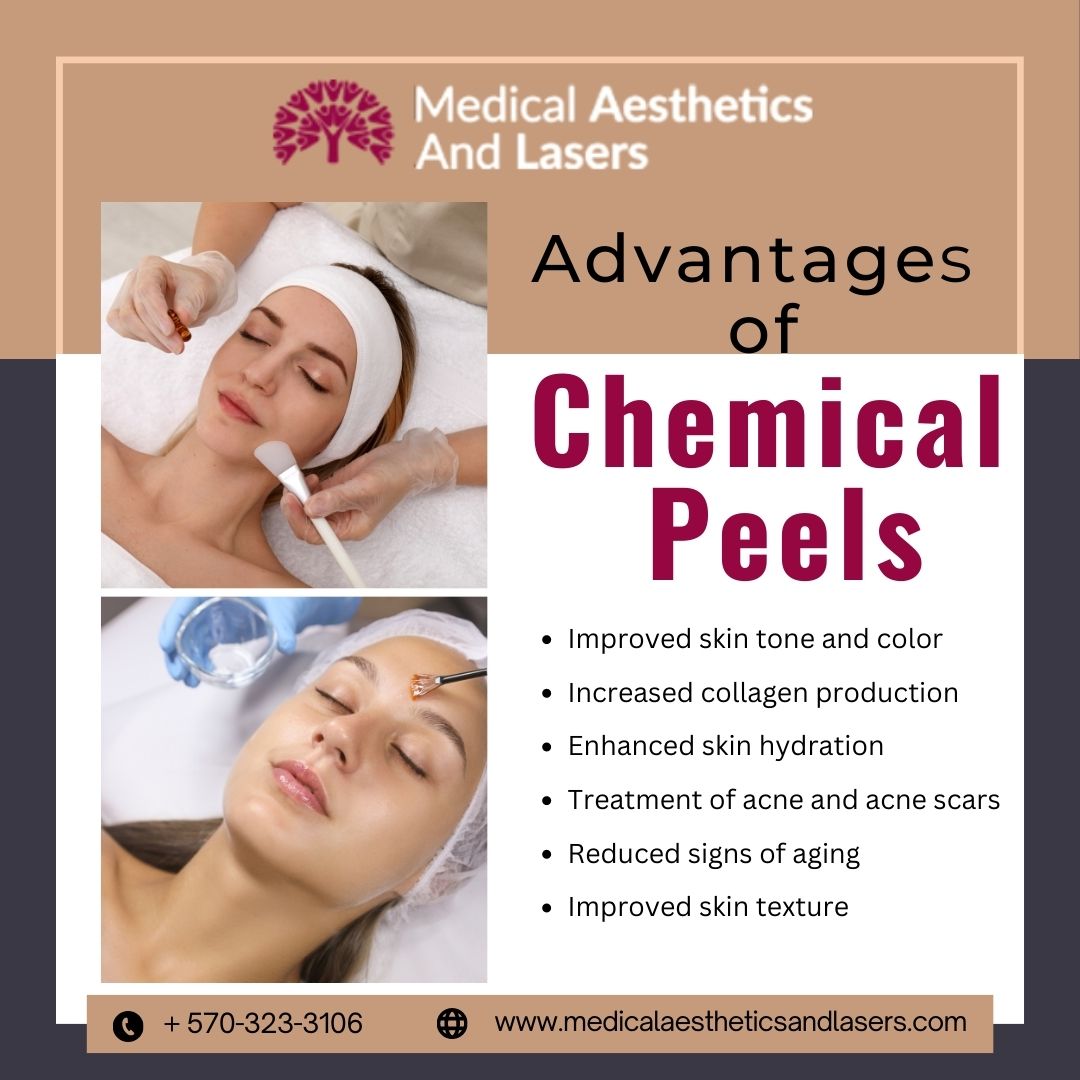Introduction
Chemical peels are popular cosmetic treatments offered by medical aesthetics and laser clinics. They involve the application of chemical solutions to the skin, which helps exfoliate and rejuvenate the outer layers, resulting in a smoother, more youthful complexion. In this detailed article, we will explore the treatment process of chemical peels, their benefits, associated costs, and precautions to consider. By understanding the ins and outs of chemical peels, individuals can make informed decisions about their skincare journey.
Understanding Chemical Peels
Chemical peels are skincare treatments that involve the application of various chemical solutions to the skin. These solutions are carefully chosen based on the individual’s skin type and concerns. The chemicals work by exfoliating the outer layers of the skin, stimulating collagen production, and promoting the growth of new, healthy skin cells. Chemical peels can address a range of skin concerns, including acne, hyperpigmentation, fine lines, wrinkles, and uneven skin texture.
The Chemical Peel Treatment Process
The chemical peel treatment process typically involves the following steps:
- Consultation: During the initial consultation, a qualified skincare professional will assess your skin type, discuss your concerns, and determine the most appropriate type and strength of chemical peel for your specific needs.
- Preparation: Before the treatment, the skin is thoroughly cleansed to remove any dirt, oil, or makeup. In some cases, a pre-treatment regimen may be recommended to optimize the results of the chemical peel.
- Application: The chemical peel solution is applied evenly to the skin using a brush or cotton applicator. The solution is left on the skin for a specific duration, depending on the type of peel and desired depth of exfoliation.
- Neutralization: After the designated time, the chemical peel is neutralized using a neutralizing solution or water, and the skin is cleansed to remove any residual chemicals.
- Post-Treatment Care: The skincare professional will provide specific instructions for post-treatment care, which may include using gentle skincare products, avoiding direct sunlight, and applying sunscreen regularly.
Benefits of Chemical Peels
Chemical peels offer numerous benefits for individuals seeking to improve the appearance and health of their skin. Some key advantages include:
- Exfoliation and Skin Renewal: Chemical peels effectively remove dead skin cells, revealing fresh, rejuvenated skin with a smoother texture.
- Improvement in Skin Tone: Chemical peels can help even out skin tone, reduce the appearance of hyperpigmentation and sun damage, and promote a more radiant complexion.
- Reduction of Fine Lines and Wrinkles: Chemical peels stimulate collagen production, which can lead to the reduction of fine lines, wrinkles, and other signs of aging.
- Treatment of Acne and Acne Scars: Chemical peels can be effective in treating acne by unclogging pores, reducing inflammation, and improving the overall appearance of acne scars.
- Enhancement of Skincare Product Absorption: By removing the outer layer of dead skin cells, chemical peels can enhance the penetration and efficacy of skincare products applied after the treatment.
Cost Considerations
The cost of a chemical peel can vary depending on several factors, including the type and strength of the peel, the expertise of the skincare professional, the geographical location of the clinic, and any additional treatments or services included. It is recommended to consult with a qualified skincare provider to determine the precise cost based on your specific needs and desired outcomes.
Precautions and Aftercare
To ensure the best possible results and minimize the risk of complications, it is important to follow certain precautions and aftercare instructions after a chemical peel treatment. These may include:
- Avoiding Sun Exposure: Protect your skin from direct sun exposure immediately after the treatment. Apply broad-spectrum sunscreen with a high SPF and wear protective clothing.
- Following Skincare Recommendations: Your skincare provider will provide specific post-treatment skincare recommendations. Follow them diligently to maximize the benefits of the treatment and promote proper healing.
- Avoiding Harsh Products: Use gentle skincare products that are suitable for your skin type and avoid harsh chemicals or exfoliants that may irritate the skin.
- Avoiding Picking or Scrubbing: Let the skin naturally exfoliate and avoid picking or scrubbing the treated area, as this can lead to scarring or complications.
- Maintaining Moisture and Hydration: Use moisturizers and hydrating products to nourish the skin and maintain its moisture levels.
Conclusion
Chemical peels are versatile and effective treatments offered by medical aesthetics and laser clinics to address various skin concerns. By exfoliating and rejuvenating the skin, chemical peels can improve skin texture, tone, and overall appearance. The benefits of chemical peels, including skin renewal, improved complexion, and reduction of signs of aging, make them a popular choice among individuals seeking a refreshed and youthful look. Consult with a qualified skincare professional to determine if a chemical peel is suitable for your specific needs and experience the transformative effects it can have on your skin.
